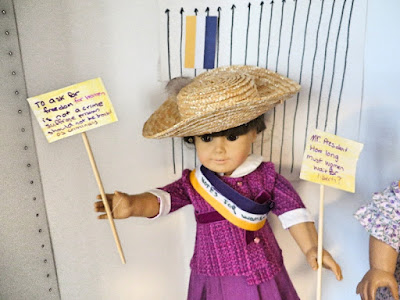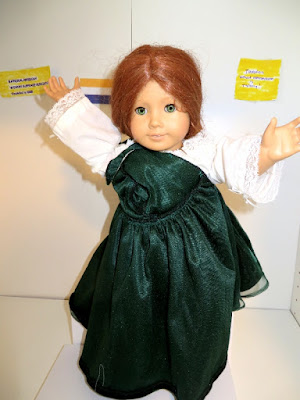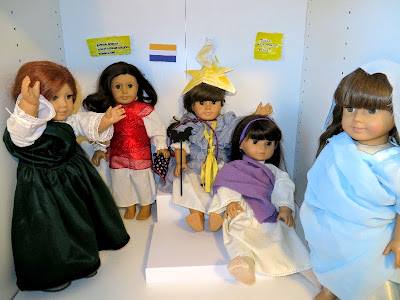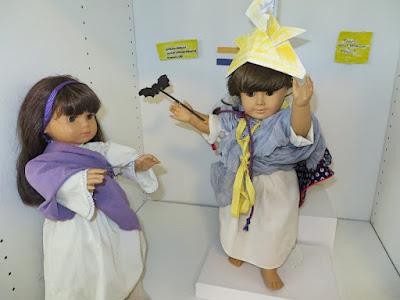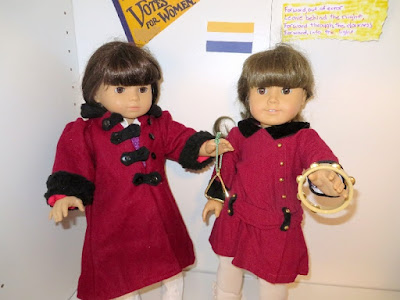All about me, Susanna, the time traveler! I'm a modern girl who travels through time to visit my friends and view historic sites.
Monday, August 31, 2020
Celebrating the 19th Amendment: After the March
Celebrating the 19th Amendment: Time Travel to the Women's Suffrage Parade in 1913
Celebrating the 19th Amendment:
Time Travel to the Women's Suffrage Parade in 1913
Celebrating the 19th Amendment: Time Travel to the Women's Suffrage Parade in 1913
Celebrating the 19th Amendment:
Time Travel to the Women's Suffrage Parade in 1913
Celebrating the 19th Amendment: Time Travel to the Women's Suffrage Parade in 1913
Celebrating the 19th Amendment:
Time Travel to the Women's Suffrage Parade in 1913
At 2 p.m. the Illinois delegation assembled on New Jersey Avenue and Wells was nowhere to be found. The other two ladies who agreed to march with Ida in the separate section, Geraldine Brooks and Belle Squire (co-founders of the Alpha Suffrage Club) went to look for her, but returned to the march without Ida. Ida jumps in and marches with the Illinois delegation mid-way through. You may see more "colored" women in various delegations such as professional groups, women's clubs, sororities and women's clubs. You may also see some on the floats, in the marching bands and other places. [Editor's note: I ran out of energy to change Addy multiple times in one day but look for a women's history month project highlighting specific women in the future.]
Celebrating the 19th Amendment: Time Travel to the Women's Suffrage Parade in 1913
Celebrating the 19th Amendment:
Time Travel to the Women's Suffrage Parade in 1913
Celebrating the 19th Amendment: Time Travel to the Women's Suffrage Parade in 1913
Celebrating the 19th Amendment:
Time Travel to the Women's Suffrage Parade in 1913
Sunday, August 30, 2020
Celebrating the 19th Amendment: Time Travel to the Women's Suffrage Parade in 1913
Women's Suffrage Parade
Pennsylvania Avenue, Washington, DC
March 3, 1913
Brought to you by Susanna and the magical time travel window.
March 3, 1913, the day before Woodrow Wilson's inauguration, the National American Woman Suffrage Association is parading for women's suffrage down Pennsylvania Avenue. Lawyer and activist Inez Milholland leads over five thousand suffragettes up Pennsylvania Avenue, along with over 20 parade floats, nine bands, and four mounted brigades.
Dressed in white to represent the "New Woman" of the 20th-century, she rides astride a white horse, "Grey Dawn."
 |
| Inez Milholland astride Grey Dawn |
“Forward out of error,
Leave behind the night.
Forward through the darkness,
Forward into light!”
The words are meant to evoke the suffrage movement’s goal of a brighter future through women’s votes, and the hope of leaving behind the “error” and “darkness” of oppression.
The first section contains floats that represent countries where women already have full suffrage (Norway, Finland, New Zealand and Australia), Women from the National Association for Women's Suffrage Norway. Norway has just granted women the right to vote in 1913. In 1906, Finland, was the second country in the world to implement both the right to vote and the right to run for office. Finland was also the first country in Europe to give women the right to vote.
The first section contains floats that represent countries where women already have full suffrage (Norway, Finland, New Zealand and Australia), Women from the National Association for Women's Suffrage Norway. Norway has just granted women the right to vote in 1913. In 1906, Finland, was the second country in the world to implement both the right to vote and the right to run for office. Finland was also the first country in Europe to give women the right to vote.
This section also features floats bearing women from countries where women have partial suffrage (Sweden, Denmark, Iceland, Great Britain and Belgium) and countries where women were working for suffrage. Here is a woman from The National Association for Women's Suffrage (Sweden), a part of the International Woman Suffrage Alliance.

